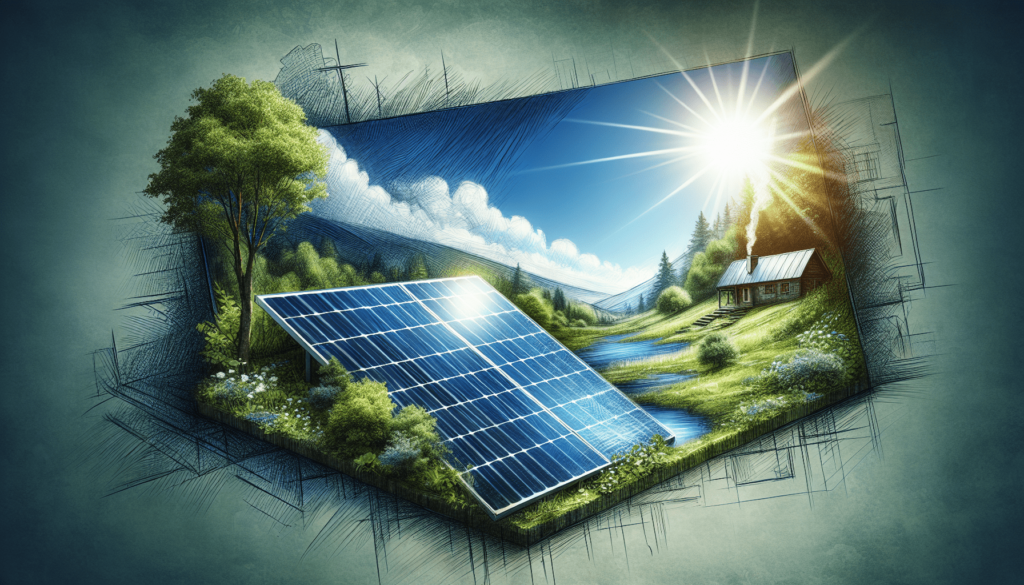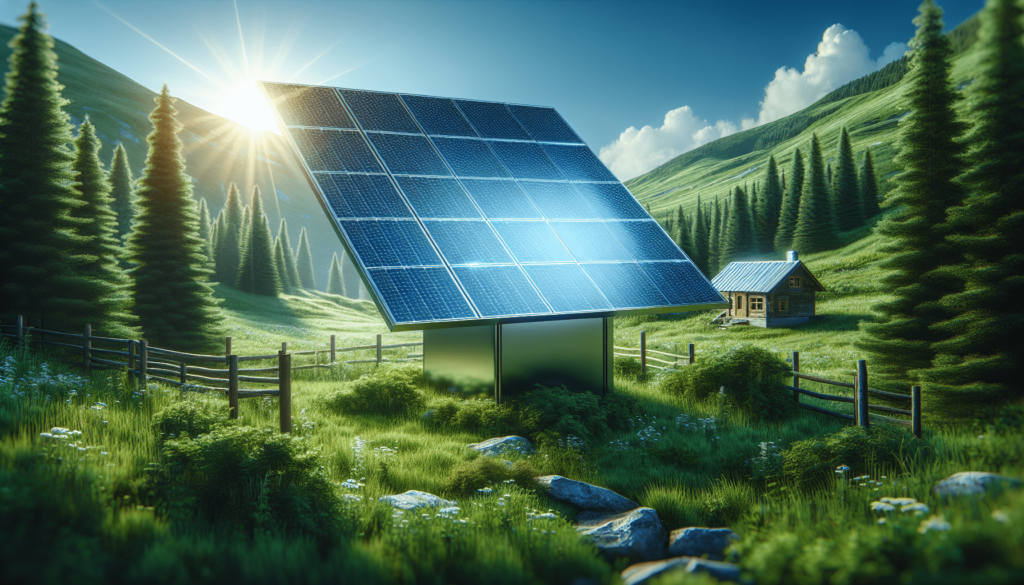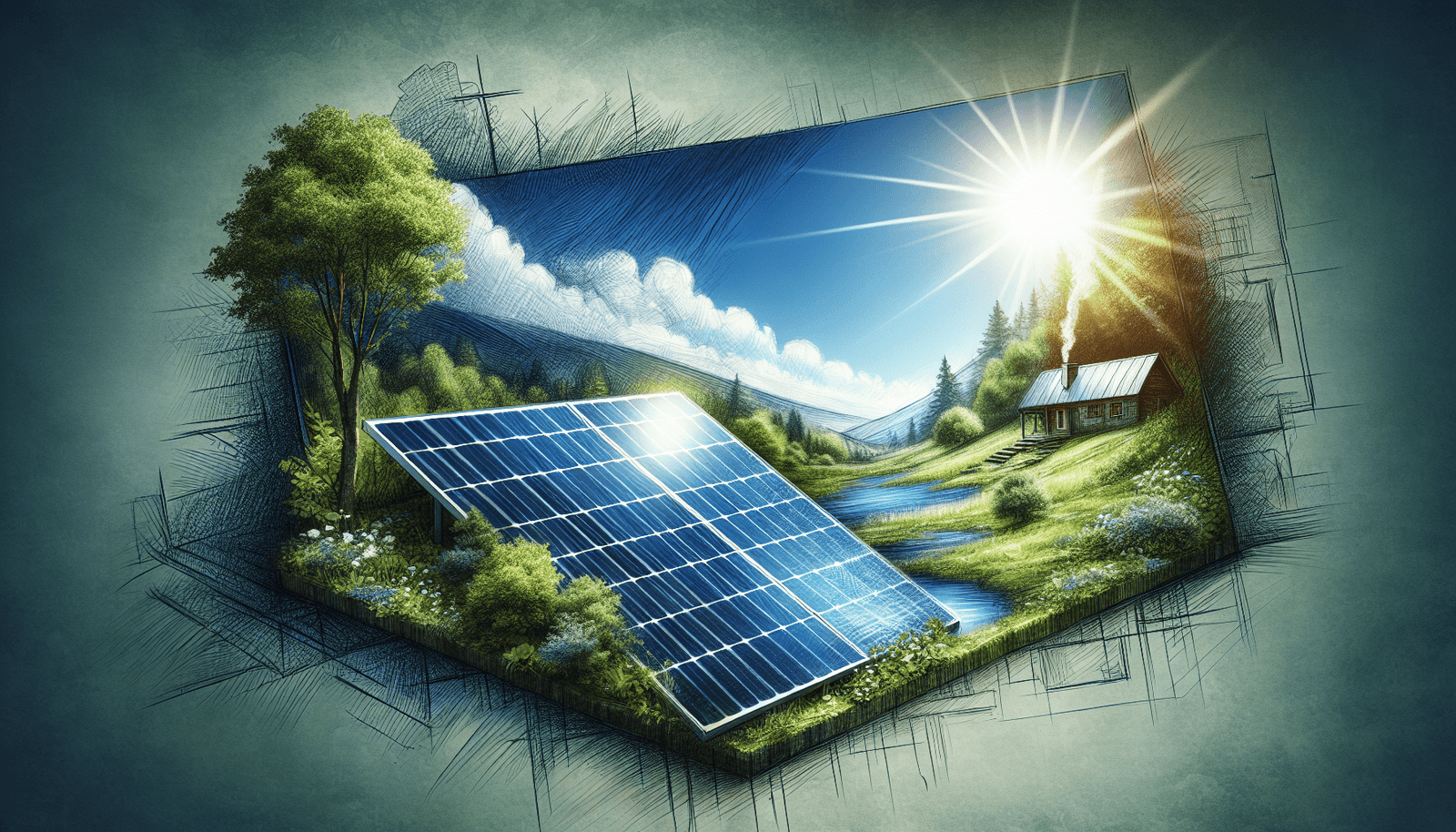Have you ever thought about how you would survive if the power grid suddenly went down? It’s a question that more and more people are contemplating, especially in an era where natural disasters and unexpected events seem to be increasingly common. One of the ways you can prepare for such an event is by setting up an off-grid energy source, and solar power is one of the most popular options for preppers. Let’s explore how you can start harnessing solar energy for your off-grid needs and why this might be the perfect solution for your self-sufficiency goals.
Why Solar Power for Preppers?
Choosing solar power for your off-grid energy needs brings a lot of benefits that traditional power sources might not provide. For starters, it’s renewable and sustainable. As long as the sun shines, you have access to free energy. This isn’t just good for the planet—it’s excellent for your long-term prepping plans. Additionally, solar technology has come a long way, making it more accessible and reliable than ever before.
Advantages of Solar Power
The main advantage is, of course, independence from the grid. You control your energy production and consumption, which can be crucial in a survival scenario. Solar panels are low maintenance, once installed, they quietly do their job without requiring significant upkeep. Also, they offer a silent operation, unlike generators that are noisier and require gasoline or diesel to run.
Overcoming Challenges
While solar power is fantastic, it’s not without its challenges. The initial investment can be high, and efficient solar systems require proper planning and setup. Weather conditions and geographic location can also affect the efficiency of solar panels, but with new technology, solutions like battery storage can help mitigate these issues.
Assessing Your Energy Needs
Setting up an effective solar power system begins by understanding your energy needs. This step might seem mundane, but it’s crucial. To figure out how much energy you’ll require, make a list of essential appliances and devices you plan to keep running off-grid. Think of everything from lighting to refrigeration, and don’t forget about your electronic devices.
Calculating Energy Consumption
Once your list is ready, you’ll want to calculate the watt-hours each item uses per day. This can often be found on a device’s label or manual. Multiply the wattage by the number of hours you’ll use it daily to get watt-hours. Add these up for all your items to get a rough estimate of your daily energy consumption. Remember to plan for a little extra to accommodate unexpected usage.
| Appliance/Device | Wattage (Watts) | Hours Used Daily | Daily Consumption (Watt-hours) |
|---|---|---|---|
| LED Light Bulb | 10 | 5 | 50 |
| Refrigerator | 120 | 24 | 2,880 |
| Laptop | 50 | 4 | 200 |
| Smartphone | 5 | 3 | 15 |
| Total | 3,145 |

Designing Your Solar Power System
With your energy needs assessed, it’s time to design a solar power system that’s right for you. This involves selecting the right components, such as solar panels, charge controllers, batteries, and inverters. Each component plays a critical role in your system, so understanding what each does can help you make informed choices.
Selecting Solar Panels
Solar panels are the most visible component of your system. You’ll need to consider factors like the wattage of the panels, the amount of sunlight (irradiance) in your area, and available space for installation. Generally, you’ll want enough panels to generate more power than your daily consumption during peak sunlight hours.
Charge Controllers
A charge controller sits between the solar panels and your battery bank, ensuring that the batteries are charged at the correct rate. They help protect against overcharging, which can be especially helpful in extending the life of your batteries.
Batteries for Energy Storage
Choosing the right batteries is perhaps the most critical part of your setup. You’ll generally choose between lead-acid and lithium-ion options. While lithium-ion is more expensive, they last longer and require less maintenance. Regardless, you’ll want enough battery capacity to get you through periods with little sun.
Inverters: Converting Solar Power
The inverter is what converts the electricity from your solar panels into the form that your appliances use. Depending on your system, you may need a pure sine wave inverter for sensitive electronics, or a more affordable modified sine wave inverter for basic energy needs.
Installation Process
Setting up your solar power system can be a do-it-yourself project if you’re handy and comfortable with the technical aspects. However, for more complex systems or if you’re not as technically inclined, hiring professionals might be worth considering.
DIY Installation
If you choose the DIY route, make sure you thoroughly research each step of the installation. Start by setting up your panels in an area where they’ll receive maximum sunlight and angle them accordingly. Follow by connecting the solar panels to the charge controller, then to the batteries, and finally, connect the inverter.
Professional Installation
For a bit more peace of mind, consider engaging with professional installers. They can ensure that everything is set up safely and optimized for your needs. While there’s an additional cost, it might save you from costly mistakes in the long run.

Maintaining Your Solar Power System
Regular maintenance is key to keeping your system running efficiently. This doesn’t require much, but regular checks can prevent minor issues from becoming big problems. Clean your panels regularly to ensure they’re operating at peak efficiency, especially after periods of heavy pollen or dust.
Monitoring Energy Usage
Track your energy consumption versus production. This will help you see if your needs are outstripping your system’s capabilities and allow you to make adjustments. Many modern systems offer monitoring via smartphone apps, making this easier than ever.
Expanding Your System
As your energy needs grow, you may find you need to expand your system. Luckily, solar power setups are quite modular. You can add additional panels or batteries relatively easily. Keep in mind that your charge controller and inverter need to be capable of handling the increased capacity, or they will need upgrading too.
Emergency Preparedness with Solar Power
In a prepping context, solar power proves exceptionally useful. Unlike gas generators, solar panels don’t require constant fuel – this can be a game-changer in a scenario where fuel is scarce or unavailable. With proper setup, you can ensure a continual power supply for critical appliances, enhancing your ability to stay safe and comfortable.
Planning for the Unexpected
No matter how well you prepare, scenarios might arise that challenge your setup. It’s a good idea to have backup plans, like portable solar panels or additional, high-capacity batteries. That way, you can stay powered as long as the sun is shining, mitigating unforeseen circumstances effectively.
Conclusion
Switching to solar power for off-grid energy requires some upfront effort and investment, but the benefits can be substantial. Not only does it offer an environmentally friendly energy solution, but it also gives you peace of mind knowing you’re prepared for any grid-down situation. Plus, who wouldn’t appreciate a little more independence and self-reliance? As you embark on this journey, remember to enjoy the process and take satisfaction in your move towards self-sufficiency.
The journey toward solar power integration can feel daunting at the start, but step by step, you can transition smoothly into a lifestyle where the sun is your energy ally. Reflect on your energy needs, choose your components wisely, and stay committed to learning and maintaining your system for optimal results. Your future self will thank you for the foresight and preparation embedded in securing your off-grid energy independence. Enjoy the empowerment that comes with taking control of your own energy fate!




